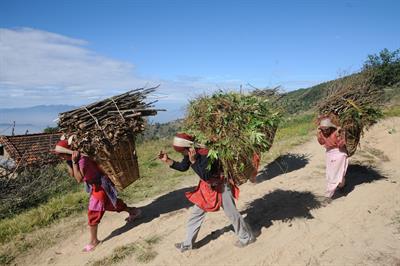PDF chapter test TRY NOW
We all use various forest produce. However, our dependency on forest resources varies. Modern approaches in forest conservation have found that enforcing forest laws or policies that do not recognise the requirements of different groups who rely on the forest often fail to achieve their objectives when considering the conservation of forests.
Thus, when we look at the conservation of forests, we need to recognise the various stakeholders (people who are directly or indirectly involved in the forest) whose dependency on the forest resources varies. Management of forest and wildlife has to consider the interests of all these stakeholders, which become a challenging task. There are various stakeholders of forests:
i. Local communities or tribals living within or around the forest areas depends on the forest produce for various aspects of their life. They require the five fundamental F's: Food, Fodder, Fuel or firewood, Fibre, and Fertiliser for survival. The locals use leaves as fodder, herbs as medicines, fruits and nuts as food.

Tribals using forest produce
ii. Forest department of the Government that owns the land and is responsible for controlling forest resources, its conservation and management. The Government earns revenue from selling timber to the construction and furniture industries. They also profit from commercial monoplantations of trees such as pine, eucalyptus, teak, bamboo etc., to obtain products for industries like paper, plyboard etc.

Monoplantation of pine trees
iii. Industrialists from those who use "tendu leaves" to make bidis to those with paper mills use a variety of forest produce. However, they are not reliant on any one type of forest product. Industries see the forest as merely a source of raw materials for their factories. Large interest groups would petition for access to these raw materials at artificially low prices. They are neither concerned with the loss of biodiversity and ecosystem nor the sustainable development of the forests.
iv. Wildlife and nature enthusiasts who are not dependent on the forests but interested in conserving nature in its pristine form. Non-governmental organisations (NGOs) like the World Wide Fund for Nature (WWF), International Union for Conservation of Nature and Natural Resources (IUCN) have a significant influence on forest policy and management.
The conservationists' attention was initially concentrated on large animals such as lions, tigers, elephants, and rhinoceros. They now understand the importance of preserving biodiversity as a whole, regulating industrial overexploitation of forest resources, and involving local people in the conservation of forests. The Ministry of Environment and Forests has designated protected forest areas, wildlife sanctuaries, biodiversity hotspots for special attention and management.
Reference:
https://www.flickr.com/photos/dfid/4157866273
https://pxhere.com/en/photo/998230
